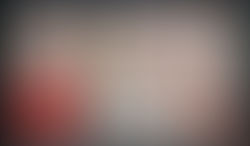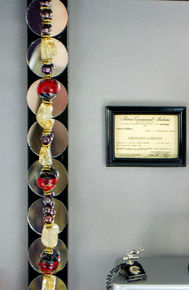The Diner (Coming to America)
An immigration story staged inside a 1950s diner.
Mixed Media Assemblage
13 x 19 x 4 inches | Custom Framed
2021
At first glance, the room hums with optimism: cherry-red booths, chrome trim, Coca-Cola logos, and platinum walls that catch the sparkle of citrine, freshwater pearls, and Murano glass. It’s the America of promise — a beacon for those seeking refuge.
In quiet counterpoint, small details register urgency and loss: a phone left off the hook; a delicate slip abandoned — signs of a hurried exit with only what can be carried.
At the back, a framed “business license” conceals part of the artist’s father’s 1939 U.S. visa application — his employment record from Banca Commerciale d’Italia and the official notice of dismissal under Italy’s 1938 Racial Laws for being Jewish. The bureaucratic phrasing belies the brutality, sharpening the contrast between the diner’s cheerful façade and the lived reality of displacement.
Striking yet nuanced, this work links immigration, Jewish refugee history, and American diner culture, inviting reflection on why people leave, what they carry, and how family histories endure.
Materials: Dollhouse miniatures, mirrors, wood, paper, citrine, freshwater pearls, Murano glass, photograph, cabinet handle
Framing: Custom shadow box with museum glass in a deep black wooden frame, created in collaboration with Chevy Chase Art Gallery, Washington, DC.
Justice & Belonging







